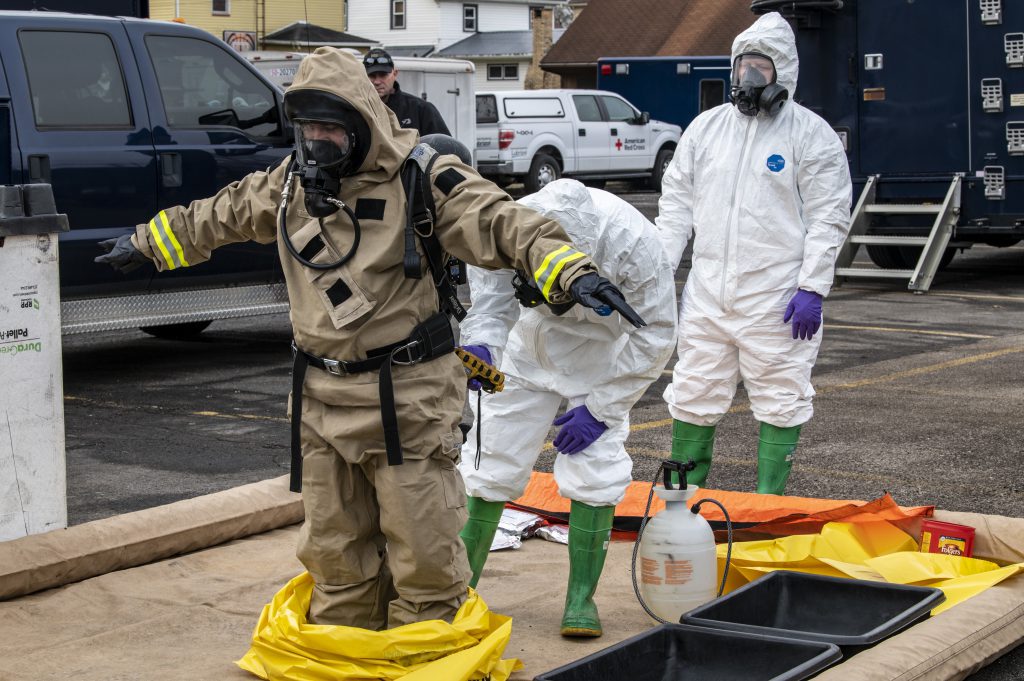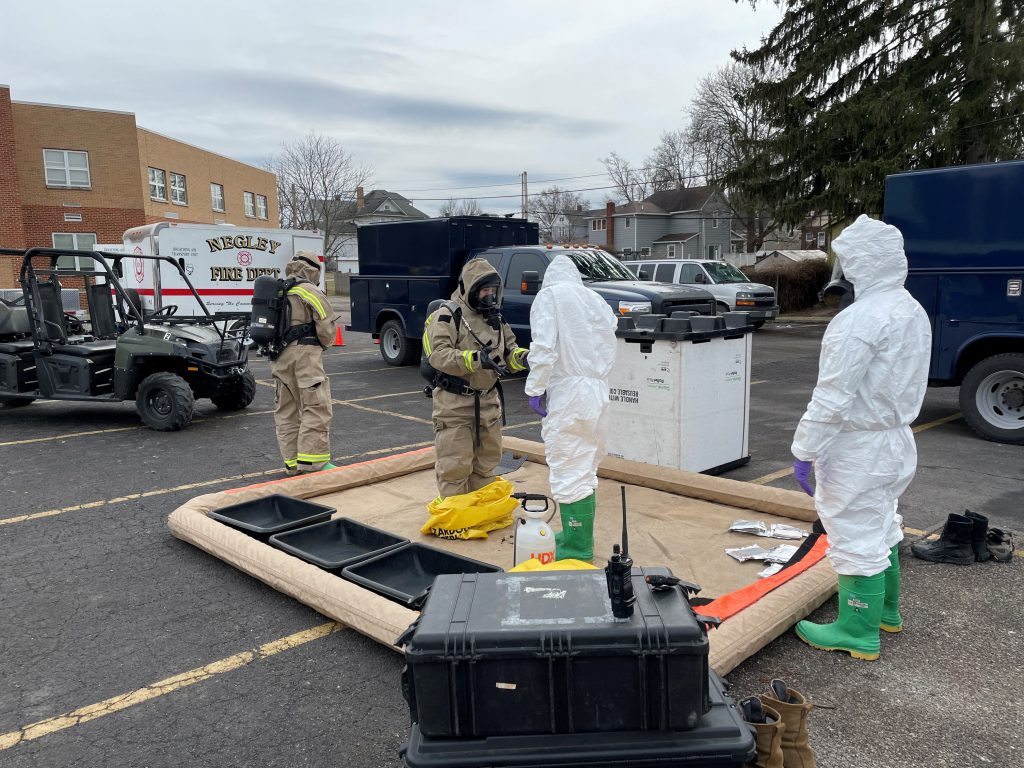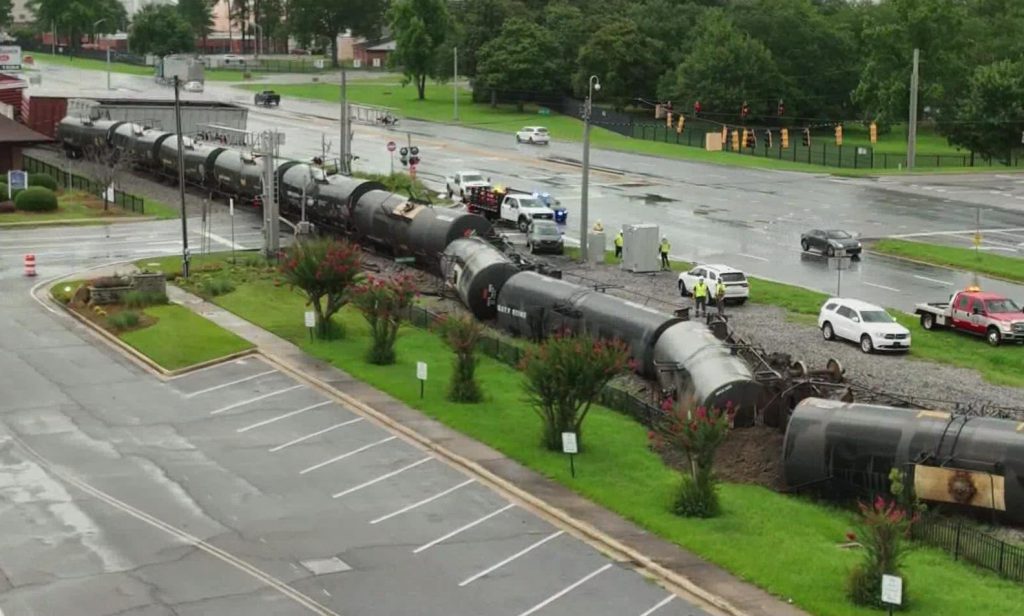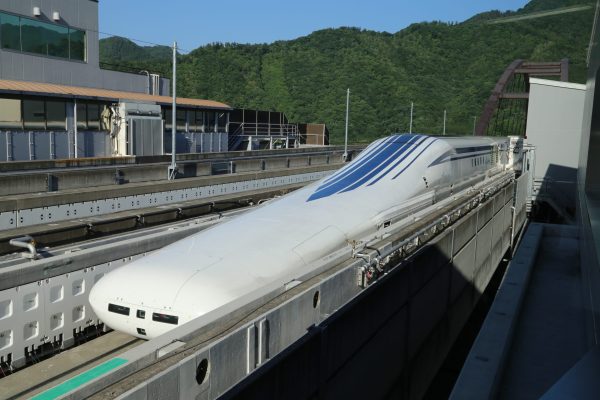By Maj. Derick Chandler, PMP, M.SAME, USAF, Capt. Aristide Badje, USAF, and Aleasha Duggins

Chemical releases caused by train derailments pose a threat to military installations and their surrounding communities—but potential interim solutions exist to close gaps between both jurisdictions and increase local resiliency.
The recent incident in East Palestine, Ohio, where a Norfolk Southern train derailed due to the potential failure of an overheated wheel bearing, has spotlighted the need to increase the resilience and preparedness of local communities. The event used the release of more than 100,000-gal of hazardous chemicals from 11 railcars, consisting of 2-ethylhexyl acrylate, benzene, butyl acrylate, combustible liquids, ethylene glycol monobutyl, isobutylene, and vinyl chloride. The derailment and chemical release triggered the upheaval of an entire community, created millions in damages, polluted the environment, and caused immeasurable harm to thousands of citizens locally and millions more regionally.
Though East Palestine had emergency capabilities, this event showed the cracks within community preparedness and, importantly, underscored the necessity to address these concerns at military installations. In 2022 alone, there were a total of 1,276 derailments nationwide that involved 4,639 hazmat railcars, of which 453 were damaged—causing 15 chemical releases and over $100 million in reported damages. Most concerningly, at least five derailments have occurred within a 10-mi radius of U.S. Air Force installations in the past three years, such as Robins AFB, Ga., where in July 2022, a total of 20 railcars derailed within several hundred feet of the installation fence line. Several cars contained hazardous materials like liquid (molten) sulfur, a flammable chemical that produces poisonous gases if burned. In response, emergency personnel closed the main road at the base, leadership stopped through traffic at the main gate, and operations on that side of the installation ceased to ensure community safety.
Though none of the railcars were breached at Robins, the incident at East Palestine provides a warning of how disastrous the event could have been. Over 23,000 personnel—civilian, contractor, and military—work at Robins AFB, and the nearby city holds a population of more than 81,000 people. The installation is home to an Air Logistics Complex serving maintenance and repairs for various airframes, from the C-5 Galaxy to the F-15 Strike Eagle. An incident on the magnitude of East Palestine would stop critical mission operations for an immeasurable amount of time and halt local economic impact from the installation.
More needs to be done to increase the resilience of military installations and their surrounding communities to chemical releases. Standing up for meaningful interim solutions to prepare in the event of chemical releases from train derailments or other disasters is imperative and necessary.
PROTECTING HEALTH
Typically, to protect oneself from chemical releases, an individual must shelter in place, evacuate, or, in the worst-case scenario, don a respirator. However, those options may not be feasible for the overall population in the event of a chemical release, where the community would be rapidly enclosed within the chemical plume and have only minutes to seconds to react.

Imperfect Options. Sheltering in place is usually the most effective course of action, but if the building does not have an accessible ventilation shut-off switch, that shelter could quickly become filled with dangerous chemicals. Further, a community told to evacuate without any prior notice could cause traffic congestion, delay the response of emergency personnel, or further expose residents to the chemical released. Finally, while donning personal protective equipment like a respirator is effective for personal protection, it is infeasible to think that an entire military community has respirators ready at first notification of a train derailment.
Another community vulnerability is the limited resources for emergency responders during disasters. Usually, requests for federal assistance take hours to approve and hours to days to be readily available. Even if the request is expedited, the infrequency of joint emergency response training and exercises between military personnel, emergency management, and local first responders creates a training gap between parties that could significantly slow or break a response.
Addressing Vulnerabilities. The Air Force has established processes for community preparedness to combat these vulnerabilities, but generally, they need to be better communicated and utilized during an emergency event.
In response, emergency personnel closed the main road at the base, leadership stopped through traffic at the main gate, and operations on that side of the installation ceased to ensure community safety.
The primary process the Air Force uses for chemical releases is the Toxic Industrial Chemical/ Toxic Industrial Material Vulnerability Assessment. This is performed annually to identify potential vulnerabilities. While the communication tool is effective, it has little outside influence when providing community preparedness. Specifically, the document is classified and not privy to community response sharing or the populace at large. This limits its audience and effectiveness.
Another issue is that railroad companies make it difficult to gather information on hazards that may impact either the installation or local community. Historically, railroad companies do not share their data with military authorities during the preparedness phase of emergency management, only through emergency requests.
An additional process the Air Force can exercise is establishing a memorandum of agreement or a memorandum of understanding between federal and local emergency communities. However, these documents have significant gaps regarding ongoing training between national and local partners, the need for cooperation from institutions, and tunnel-visioned resource availability. These limitations cause an unnecessary burden on community preparedness, emergency responders, and the military base.
INTERIM SOLUTIONS
It is clear there is a need to create new federal policies or tailor current policies to better increase community preparedness against chemical releases around military communities. However, updating policy is a time-consuming process; as an alternative in the near term, there are several interim solutions local emergency management offices can implement.
- Strengthen agreements between military responders and civilian emergency officials to include general community engagement.
- Communicate and establish agreements between local and military emergency response teams and railroad companies.
- Prepare risk communications of the dangers of railways near installations for communities through outreach events (for example, National Preparedness Month information sessions).
Strengthening agreements between the military and civilian emergency officials will allow for more timely resource allocation, solidify cross-capability skills, and enable better community resilience during chemical releases.
Focusing efforts to engage with railroad companies will allow material lists to be obtained and permit train safety concerns to be relayed, leading to robust preparation with military communities. Furthermore, preparing early drafted risk communication and performing community events to raise local awareness can help families and the community prepare for potential train accidents that lead to chemical releases.

LONG-TERM APPROACH
While interim solutions may be considered band-aids to the overall problem, there does need to be long-term approaches with clear regulations to ensure continued military operations and protections for the community from potential chemical releases from train derailments. It should be a forefront issue to policymakers at the Department of Defense or Congressional level directing better oversight and management of railway companies transporting hazardous materials near installations. Potentially banning, imposing limitations, or creating additional security measures on railways that pass near military communities must also be considered.
The events at East Palestine and Robins AFB are prime examples that highlight the necessity of focusing on comprehensive community resilience through proper preparation. Interim solutions can be the start of military and emergency response community preparedness. Ultimately, adequate engagement and practiced risk communication with civilian and military communities will be crucial to community preparedness in the face of chemical releases, or any disaster.
Maj. Derick Chandler, PMP, M.SAME, USAF, is Radiation, Readiness & Training Element Chief, Capt. Aristide Badje, USAF, is Bioenvironmental Engineer, and Aleasha Duggins is Environmental Health & Safety Specialist, Joint Base Andrews, Md. They can be reached at dnchan19@gmail.com; badje116@gmail.com; and aleasha.duggins@outlook.com.
More News from TME
-

Developing a Maglev Network for National Defense
A transportation network leveraging superconducting magnetic levitation technologies would bring benefits for logistics, surface transportation, and energy storage, as well as strengthen national defense priorities and the defense industrial base. -

Fulfilling the Mission
Rear Adm. Dean VanderLey, CEC, USN, Commander, Naval Facilities Engineering Systems Command, sits down with TME to discuss the Department of the Navy’s Systems Command for shore facilities and expeditionary equipment, Naval Facilities Engineering Systems Command (NAVFAC) and its varied responsibility that directly support warfighter lethality. -

Strengthening Installation Energy Resilience Through a Community of Practice
The Military Energy Resilience Catalyst strengthens installation energy resilience by providing opportunities for energy practitioners to develop professionally and connect with experts, senior leaders, and colleagues.